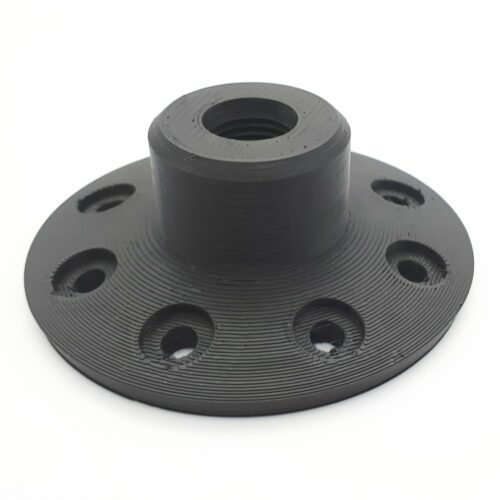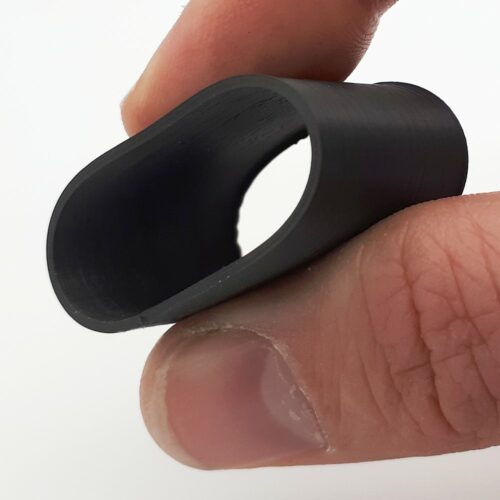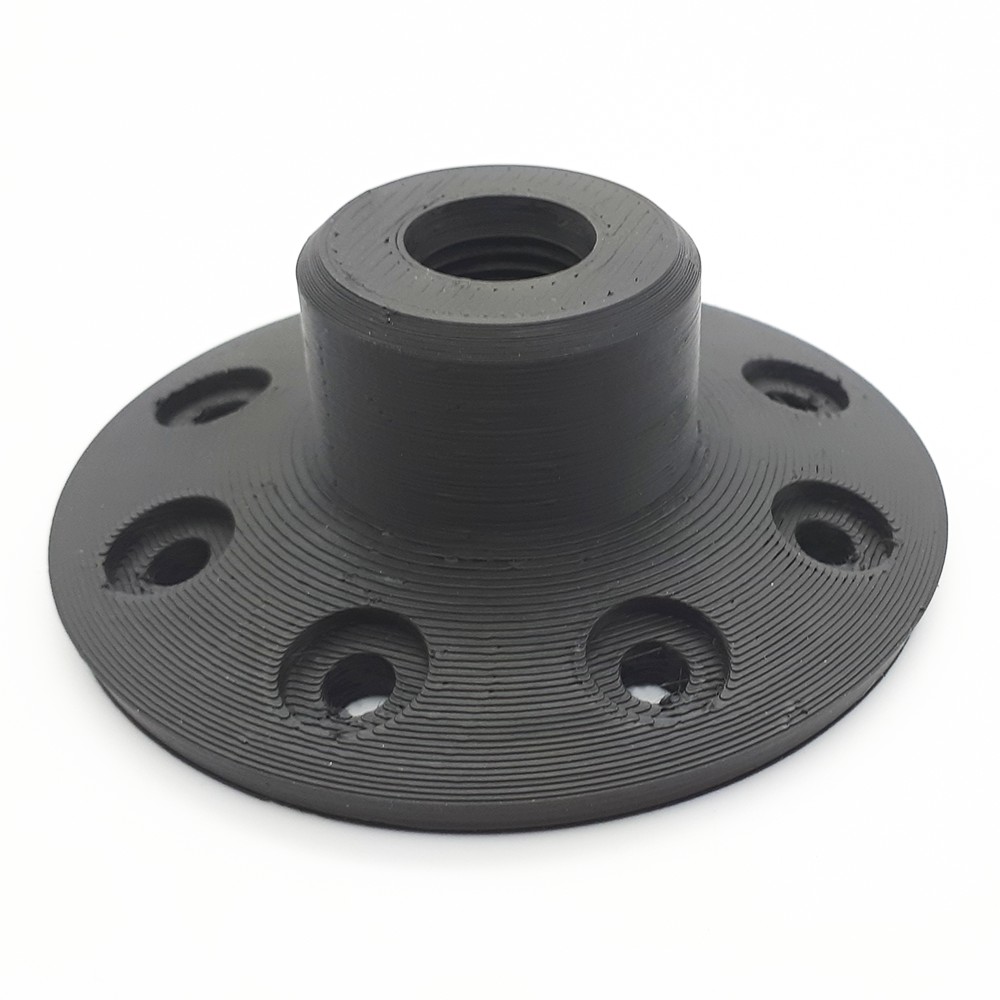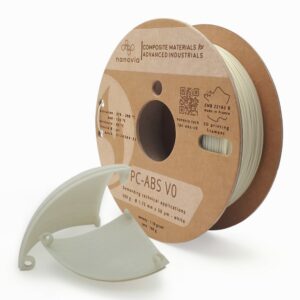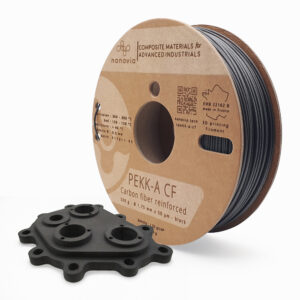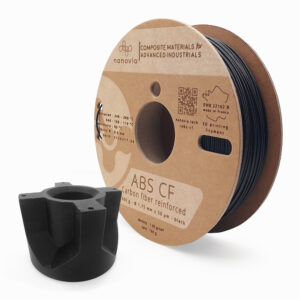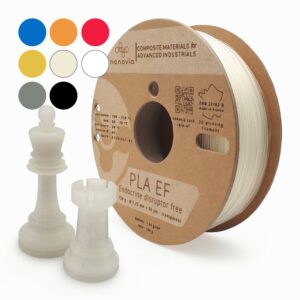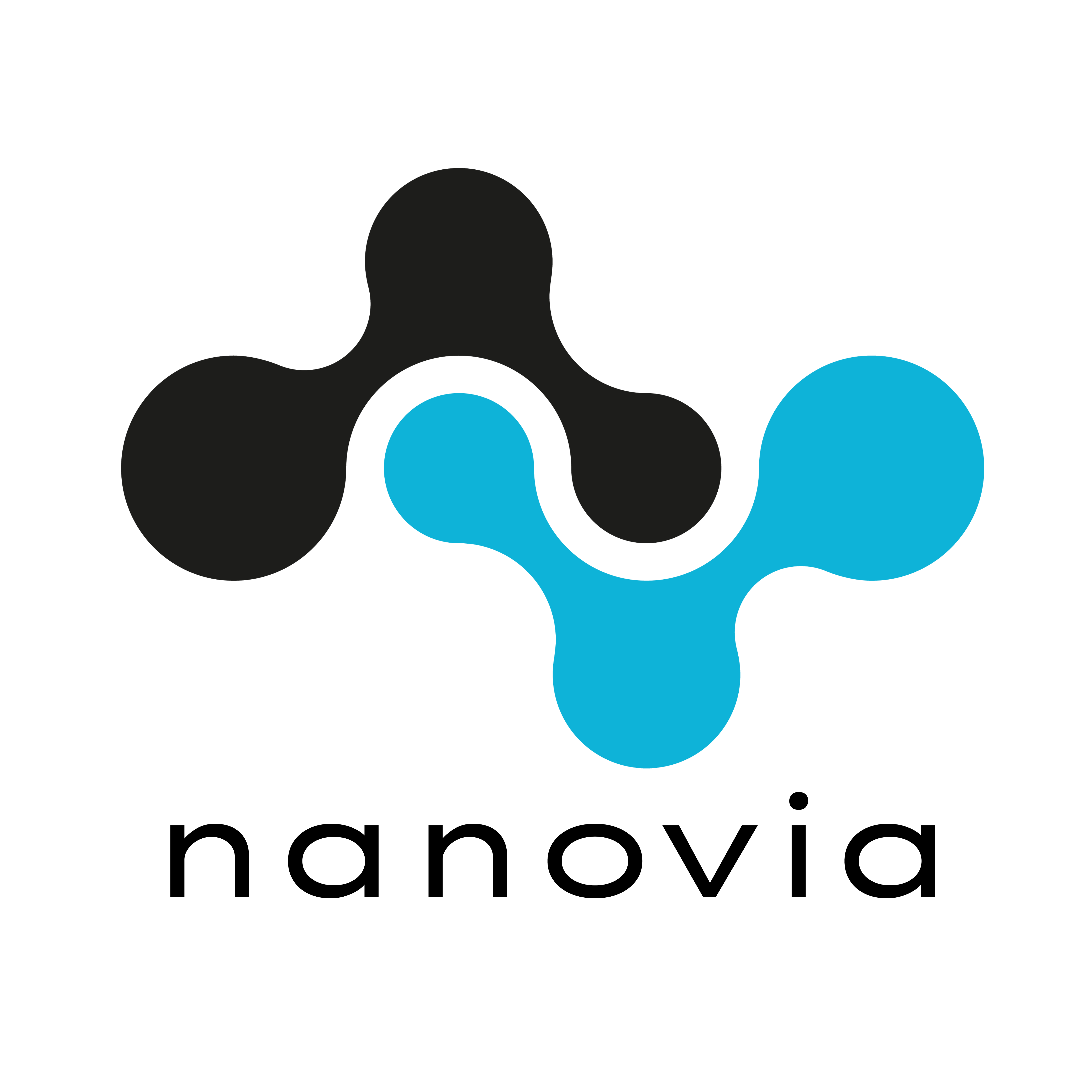Description
Properties3D Printing
Mechanical propertiesPhysical
Thermal properties
DocumentationDownload the technical chartlast updated : 27/03/2024 Used by the French nuclear industry, Nanovia Flex B4C uses bore-10’s capability to react with neutrons freed by nuclear fission. Combined with an industrial polymer, this filament offers an easy to use solution, via 3D printing for custom parts. Its semi-rigid base, allows for structural components, still able to deform when necessary and absorb shocks. This combination makes Nanovia Flex B4C particularly suited for tools, maintenance equipment, and transport vessels for fragile materials. Nanovia B4C is printable without an enclosure and does not require any build plate adhesives. Advantages
Le Nanovia Flex B4C is also available in pellet form for plastic extrusion and 3D FGF pellet printing. The risks of free neutronsWhen a free neutron hits a person, it’s able to modify/destroy the DNA of a molecule. Since the neutron does not have a charge, they are not easily slowed down by the other atomic elements, and can penetrate through a lot of material before hitting another atom’s core. How B4C captures free radicals generated by nuclear fissionThe boron present in the ceramic B4C, Is a metalloid of which several isotopes exist, Meaning that these atoms have the same number of protons but a different number of neutrons. Boron-10 in particular has a very wide core absorption cross section. When a free neutron, generated by nuclear fission encounters boron-10, this wide core absorption cross section effectively functions as a big net. This makes boron-10 much more likely to get hit than other atoms. This impact creates an predominantly unstable isotope of Boron-11 that fissures into :
10B + nth → 4 He2+ + 7Li 3+ + 2.79 MeV (6%) 10B + nth → 4 He2+ + 7Li 3+ + 2.31 MeV + γ (0.48 MeV) (94%) Source : Caractérisation de champs neutroniques rapides et épithermiques pour thérapie par capture neutronique basée sur accélérateur / Marine HERVE The two elements generated are not radioactive, the gamma radiation is absorbed by the other elements as it passes through them. Shielding made out of heavier elements such as lead allows for a quicker absorption. These properties make boron-10, in its solid form (Boron carbide) and its liquid form (Boric acid), used as a regulator (neuron poisons) in nuclear reactors. By inserting boron-10 when required, the liberated neurons by the fission of uranium-235 are intercepted, neutering the chain reaction. Application recommendationsStorage
3D Printing
Health and safetyPrinting
Post traitement
CertificationsPackagingVacuum packed spools, with desicant, packed in individual boxes with engraved serial number. Other formats available on demand.
|

